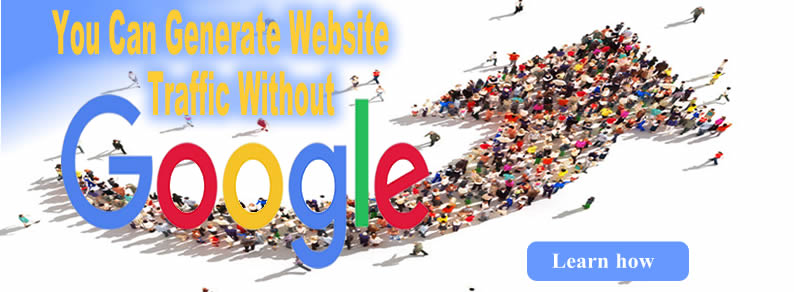 Much like the world of search and the perpetually updated algorithms of Google, the landscape of non-Google marketing sees techniques, platforms and priorities change over time.
Much like the world of search and the perpetually updated algorithms of Google, the landscape of non-Google marketing sees techniques, platforms and priorities change over time.
What hasn’t changed is the importance of understanding how to generate traffic without Google. Google is big, but it is not good to concentrate all your efforts into just one referrer.
The key to succeeding with the following 10 non-Google traffic sources is by honest participation and engagement, as opposed to spamming and dropping links to your website around the internet. It is a question we’ll return to throughout
1. Blogs
Blogging?! Nothing new here! I hear you say.
Perhaps, but I want to deal with blogs first because for me they are the first step to ‘participating in the conversation.’ And, today, there is more to blogging than simply having a part of your website dedicated to regularly updated posts.
Onsite
Blog posts on your site are great for non-Google traffic of course. You can publish at will and with more authorial control than you might get from an offsite blog. You can then use that content to entice visitors to come and read your posts via social channels etc.
Guest posts
Blog-writing is not a skill that only serves your own blog, though. Guest blogging is still a good way to further establish authority in your industry and to potentially get visitors of those blogs to click through to your site.
Offsite blog platforms
Offsite blogging platforms such as Medium are ever-improving the ways they promote articles (via email digests and at the foot of article pages) to users depending on the topics they choose to follow. Follow authors related to your niche and participate in the communities that exist there.
Comments
Don’t have time to write a full post? You can also ‘participate in the conversation’ by adding to blog comments. Be sure to prioritize adding value to the page over merely leaving a link.
The commenting engine we use on SEW, Disqus, allows commenters to have a weblink visible within their user profile when readers click their username. I’d argue it’s better practice to use this than dropping a URL in the comment itself.
2. Facebook
So you have a great piece of content – perhaps a blog post – on your website. Where are you going to share it?
Facebook is still the biggest social referrer online. According to Shareaholic, more than 18% of website referrals were from Facebook in the latter half of 2017. This is a drop from the year before, but the wedge is still huge. There are more than 2.1b monthly active Facebook users globally.
As Chuck notes, useful and fun content is the best type to share on the platform. And the best time to share on Facebook traffic-wise is around 12:00pm according to Revive Social.
3. YouTube
Although not as big on the social referral numbers as Facebook, I’ve included YouTube because it is still the second biggest social networking site globally with 1.5b monthly active users.
Like Google, YouTube uses a vast number of factors when deciding how to rank videos. These include keyword relevance in titles and descriptions, number of views, comments, likes, shares, and backlinks.
Going back to our participating in the conversation mantra, our ‘best practice’ aim with any YouTube content needs to focus on ensuring videos are valuable to those interested in your niche – whether from an entertaining or an educational standpoint (or both).
Traffic-wise, it is expected for users to be able to click-through to additional relevant information via links in the description under YouTube videos. And it can be a great referrer.
4. Instagram
I’m highlighting Instagram because in recent years it has risen to become the third most popular social channel (800m monthly active users) and it is still growing significantly as a referrer (up 890% between 2016 and 2017 according to Shareaholic).
Of course, Instagram really lends itself best to brands with the potential to produce strong visual content.
There is a heap of truth in the cliché that the platform is awash with pictures of food. It is an ideal place for chefs and restaurants to show-off their skills, use hashtags to align their posts with similar images, and to persuade viewers to click through to their website to find full recipes or directions to their establishment.
It works for other brands too. And is a great platform for inviting your audience to participate.
